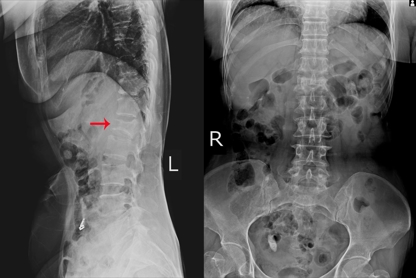Or a dysfunction due to lifestyle, diet and microbiome?
 Not so much a disease of elderly women. Anyone who has chronic inflammation is a candidate to develop osteoporosis. According to the Centers for Disease Control and Prevention,[1] almost 25% of women 65 years of age and older have osteoporosis.
Not so much a disease of elderly women. Anyone who has chronic inflammation is a candidate to develop osteoporosis. According to the Centers for Disease Control and Prevention,[1] almost 25% of women 65 years of age and older have osteoporosis.
65 used to be considered old. Now, there are plenty of women who consider themselves full of life and vibrant – not old, just mature and beginning to acquire wisdom.
So why is the incidence of osteoporosis so high? Why do we recommend that women get a “screening” Xray test called a DEXA scan every three to four years?
Those with osteoporosis risk easier hip and wrist fractures in a fall, easier compression fractures in the spine leading to chronic back pain and the hunched appearance that we so often see.
The body operates within a very narrow range of acid/base balance. A shift one way or the other toward more acidic or more alkaline leads to severe dysfunction, and even death.[2], [3] Chronic kidney disease is rampant in our modern society and is often associated with severe osteoporosis. How did the Chinese know 3500 year ago about the intimate relationship between kidney and bone?
Our bodies deal with the systemic effects of inflammation, leading to chronic acidosis, by leaching calcium from the bones to buffer the acidosis. Eventually the bone is sufficiently weakened that it simply collapses. Before that stage we experience pain, compression fractures in the back, hip fractures when we fall…
Current “standard of care” medicine recommends treatment with bisphosphonates, which will cause the bone to stop remodeling, resulting in more dense but also more brittle bone. Adverse reactions include osteonecrosis (development of dead crumbling bone) of the jaw.[4]
Two groups of researchers have studied the effect of probiotic supplementation on the development and progression of osteoporosis. Using a probiotic taken once daily by a group of women for 12 months[5], one group documented that, in the group which took the probiotic, there was no bone loss (measured in the lumbar spine, the bones of the low back) where in the group which took a placebo, there was significant bone loss. Another study[6] showed significant reduction in bone loss as measured in the distal tibia (the part of the leg bone nearest the ankle).
Adverse events in one probiotic study included 2 patients with abdominal pain, bloating and constipation, three percent of the patients in the treatment group withdrew from the study. The other study reported similar adverse effects. Both studies also included any adverse event – e.g. development of unrelated tumors, cardiovascular events (e.g. stroke), etc – which seem to me to be more related more to the patients’ systemic inflammation than to the ingestion of a beneficial gut bacterium.
Those with osteoporosis and other kidney/bone related issues are often people whose lives are modulated by fear – not of any particular thing, necessarily, just by fear in general. In Chinese Medicine, the kidney, when out of balance, expresses the emotion of fear. Kidney disease and osteoporosis are close companions, and naturally those with significant osteoporosis are fearful to falling, lest they break a bone. Homeopathic medicine has an excellent remedy for such people – Silicea – the mineral upon which our lives are based.[7] Silicon is the mineral which comprises our rocks, our mountains and our crystals. We are silicon-based lifeforms. Whether this homeopathic remedy can “cure” osteoporosis is not the relevant question. The real question is whether we wish to lead fear-based lives. Silicea can help with that dilemma, leaving us to deal with our dysfunction from a non-fear based point of view.
In the final analysis – osteoporosis is a risk, especially for middle-aged and older women. What can we do about it? Take a pharmaceutical drug which gives us dense brittle bone and carries the risk of severe jawbone crumbling? Modify our diet to include more fruits and vegetables and take a probiotic to improve our gut health, and maybe develop a little bloating or constipation? Increase the amount of exercise? Take a homeopathic remedy to help with the fear of falling, so that we can exercise?
You make the choice.
[2] Yenchek, Robert, et al. "Association of serum bicarbonate with incident functional limitation in older adults." Clinical Journal of the American Society of Nephrology 9.12 (2014): 2111-2116.
[3] Abramowitz, Matthew K. "Acid-base balance and physical function." CJASN (2014): 2030-2032.
[4] Jeremiah, Michael P., et al. "Diagnosis and management of osteoporosis." Am Fam Physician 92.4 (2015): 261-268.
[5] Ohlsson, Claes, et al. "Probiotic Treatment Using a Mix of Three Lactobacillus Strains Protects Against Lumbar Spine Bone Loss in Healthy Early Postmenopausal Women." JOURNAL OF BONE AND MINERAL RESEARCH. Vol. 33. 111 RIVER ST, HOBOKEN 07030-5774, NJ USA: WILEY, 2018.
[6] Nilsson AG, Sundh D, Bäckhed F, Lorentzon M. Lactobacillus reuteri reduces bone loss in older women with low bone mineral density: a randomized, placebo-controlled, double-blind, clinical trial. J Intern Med 2018; 284: 307–17. 19
